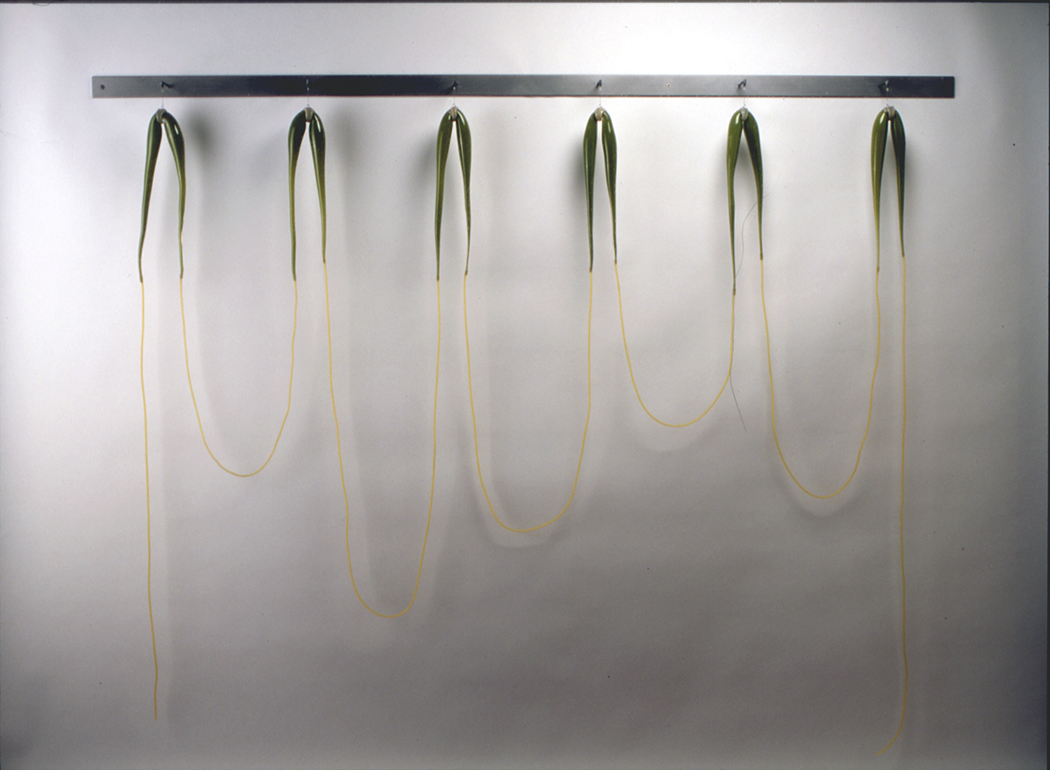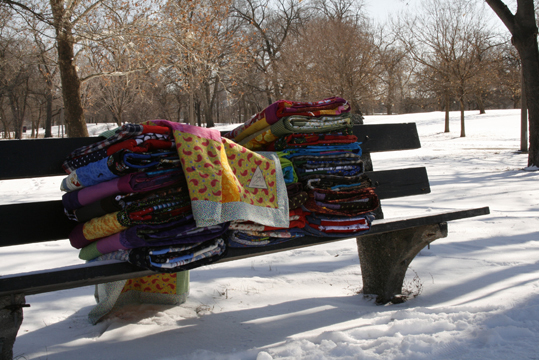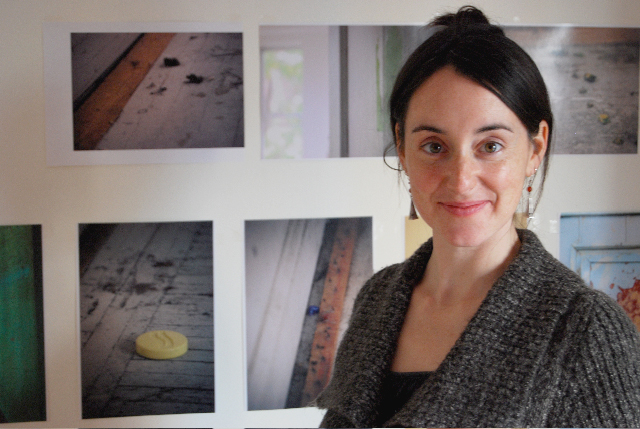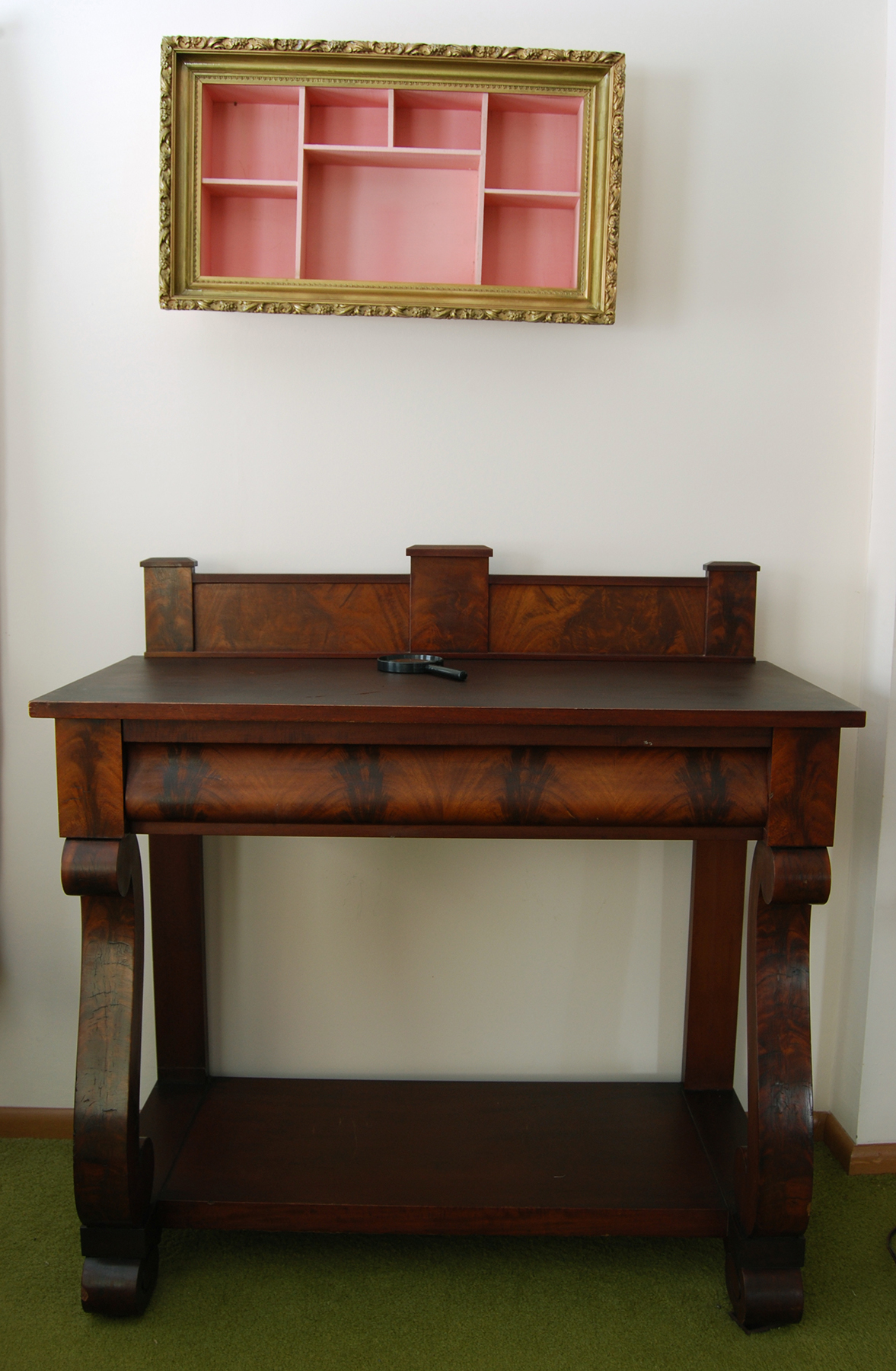Rachel Moore is an American artist and currently a Fulbright Fellow at the Aristotle University in Thessaloniki, Greece. She holds a BFA from Alfred University and an MFA from the School of the Art Institute of Chicago. Rachel is a co-founder of Spoke, an exhibition space in Chicago, IL.
Her work explores the complexity of relationships within cultures and subcultures, as well as within both built and natura; environments, as affected by human activity. Rachel is a charismatic and a highly creative individual who feels content and at peace with her career choices and it shows every time she looks at you straight in the eyes. Her Lucullian appetite is the force behind this inquiring artist. She paved her way by initially looking at Mona Hatoum’s, Kiki Smith’s and Bill Viola’s work. Only before graduate school did her interests shift from visual arts to architecture, design, and public and community art. Samuel Mockbee and the generous nature of his work have played a catalytic role in her development as an artist.
On the occasion of this interview, I met with Rachel at the Achilleion Café on Nikis Boulevard in Thessaloniki to discuss her work and the Fulbright experience. Read on to find out how she gets it all done.
Georgia Kotretsos: Is it possible to juggle a studio practice, curatorial projects, community projects, Spoke, and a family without ever dropping the ball? How do you do it?
Rachel Moore: I seem to function best when I’m working on many different projects simultaneously. It keeps me focused, interested, and challenged. I’ve tried to concentrate on one thing for a time, but it never happens that way. I end up adding things.
This past summer was a great example. I was finishing up the first year at Spoke, getting ready for a solo show at Traver Gallery, about to move to Greece on a Fulbright Scholarship, and I had a baby in the middle of it all. What allowed me to breathe was becoming a mother and prioritizing that time. I joke that I’m finally learning how to say no. Moving to Greece with a two-and-a-half month-old wasn’t something I questioned. It was the perfect opportunity at this point our lives. My husband, James Knittle (who’s also an artist), is able to be with her here in Greece while I work. I think that’s how we can do it. I work mostly from home, apart from daily meetings with other art professionals. I’ve had to cut some things for this year, like administrative duties with Spoke, and I’m spending less time making studio work. I do continue to draw, write, and take photographs, but my work here is focused on organizing an exhibition. Having a Fulbright is an amazing opportunity that’s allowed me to have a family and continue to work without skipping a beat.
 GK: Let’s focus on Spoke, its mission and the artists behind it. What creative needs of yours are met through this project?
GK: Let’s focus on Spoke, its mission and the artists behind it. What creative needs of yours are met through this project?

Standing, from left to right: Monica Herrera and Rachel Moore, two of the four Spoke founders at a performance in the space.
RM: Spoke was founded in October 2008 in Chicago’s West Loop by four of us: Monica Herrera, Heather Mullins, Rana Siegel, and myself. We were interested in forming a studio space where ideas could be shared freely, and forming a public space to fill a gap in what was offered as an exhibition and event space. It was important to have the open atmosphere in the studio area where we could each have our space — but that wasn’t divided by walls — where we shared tools, equipment, and ideas. We wanted to have open studios in one part and a public space in another, divided physically but not conceptually. What makes it unique is that it blurs the boundary between the private and the public and erases the notion of the artist working alone. The public section was based on a need for a space that wasn’t commercial, didn’t take a commission, and wasn’t only for visual arts directed toward an art audience.
Our mission is to create opportunities for creative use and interaction promoting resourcefulness, spontaneity, and experimentation, while being accessible to all. We hosted many such “public” events there, like E Pluribus Unum, which was a quiltmaking project I did with collaborator Kim DeBord that coincided with President Obama’s call to service day. Anne Wilson presented phase one of her LOCAL INDUSTRY project with the public. Kristin Frieman [presented] A Sample of Making, and recently Heather Mullins and Kevin Kaempf did Reclaimed: Clybourn Place Bridge, inviting artists to transform reclaimed floorboards. We’ve had musicians, one-night performances, readings, and more traditional exhibitions.
The first year went really well, actually. There were difficulties, certainly. One challenge has been getting the word out to the public. Obama’s national call to service day was no problem because he had a website where Kim DeBord and I announced our project. That brought in an abundance of donations and volunteers — many more than expected and 90% of whom we didn’t know and weren’t from the art field. But other than that, it’s difficult to bring in a public audience. Maybe it’s changed since I’ve been gone, but that was the challenge then – to get an audience other than the usual art crowd. Of course Spoke is situated in a gallery district within a building of other exhibition spaces, so it’s bound to have that kind of traffic.
Another unexpected was that our “studio” work took on a new form (or took a toll). It melted into the functional aspect of running a public space. We were all so invested in the public space that we devoted almost all of our time to it while we were there. It was distracting in some ways and frustrating at times. But for me, it was the beginning of realizing that the definition of my “practice” was evolving to encompass larger projects. It was creatively satisfying because I was able to look at this as another work or project. I could collaborate with others, create a mission statement, have a vision, and transform a space. It was a lot of work to get the first year going. Currently my role is undefined. I am taking a leave of administrative responsibilities. Since I physically left, Chelsea Goodwin joined us as part of the organizational team and Spoke has almost doubled in size. They’ve expanded the space and there are now three additional people sharing the studio space (a designer, an architect, and an artist). I’m still connected – they are involved in the project I am doing here – and I hope to return.
GK: By talking with you and visiting your website, the evolution of your studio work is evident. Yet it’s very hard to distinguish the works that have taken you forward to the next level. Visually, I read an extremely smooth progression and I would appreciate it if you’d discuss the works you consider significant creative pauses for you.
RM: The work can be divided either into creative pauses or milestones for my career. In the best case, the work is both. I would consider Surrender, And Still You Hope, and Sugarplum as important early sculptures for my career. Surrender was made possible by working at Benjamin Moore, Inc. (a glassblowing studio in Seattle). They were incredibly supportive and encouraging there. Surrender was also the first big piece of mine that sold. This work enabled me to get a residency at Pilchuck Glass School in Stanwood, Washington, which is where I made And Still You Hope and Sugarplum. While I was at Pilchuck, Traver Gallery called to offer me my first solo show there. It was an incredible time for me. I was invigorated and working hard in the studio.

Rachel Moore, “Surrender," 2003. Blown glass, latex tubes, metal. 82"W x 5"D x 68"H. Photograph by Lynn Thompson
Around the same time, I decided to go to graduate school. I wanted to incorporate my life with my work, meaning I wanted to make my work more effective and more available to the public while addressing social and environmental issues of concern. Conserve-A-Story was a collaborative community project that was a huge pivotal point both personally and for my career. I felt so incredibly good during that project. I had the opportunity to meet activists and community leaders who told me an unwritten history of a neighborhood through their own eyes. That personal connection with people and organic way of working helped form close relationships and enabled a deeper understanding of a history. This was probably the most fulfilling project I’d done. This way of working is now vital to my practice. But I acknowledge the fact that I need more than that – I still need the studio work. At the same time, I made One Beside Another, where I combined my interest in history and narrative to create a series of photographs and video to show presence in absence.
It was interesting because Conserve-A-Story and One Beside Another were made at the same time. One was so much about a history that wasn’t mine, while the other was deeply personal on many levels. The other evolution during this time was starting a collaboration with Kim DeBord. Trade and E Pluribus Unum were our first works.

Rachel Moore, “E Pluribus Unum,” 2009. Quilts. 4’x6’ each. Part of a public service project with Kim DeBord. Photograph by Kim DeBord and Rachel Moore.
GK: Collaboration plays a key role in your practice. What has this way of working taught you so far?
RM: That I can’t do without it. It opens up more possibilities, allows for larger ideas to emerge. Working collaboratively places me in a position of higher accountability, whether it’s to an individual, a small group, or a community.
GK: I am always fascinated by artists who manage to “escape” the four walls of their studios by looking at, and working in, the real world without losing their creative identity, but by achieving the contrary. Is there such thing as artistic generosity and if yes, in your case, is it manifested through the community projects you have worked on? In my hand, I have the catalogue for Conserve-A-Story: A collaborative exhibition celebrating a neighborhood’s unwritten history of Chicago. What is this story all about?
RM: I see myself first as a human being with a sense of responsibility to the world we are part of. Part of what I want to achieve as an artist is contributing to this. A lot of my collaboration with Kim DeBord is founded on social and environmental awareness, experiencing both the social space of performance and the genuine investment in working with the public. We’ve developed a practice that questions the purpose of making by erasing the already slippery boundary between art and life.

Rachel Moore, “Conserve-A-Story," photograph by David Ettinger. Exhibition at Garfield Park Conservatory, Chicago, IL, 2008.
There absolutely must be artistic generosity. Was Conserve-A-Story part of this? I feel the generosity there wasn’t just from me, but from those I worked with. It took a tremendous amount of work, time, energy, and trust on their part. I was the one who benefited the most I feel, although I’ve been told otherwise.
GK: Why Thessaloniki, Greece and why the Aristotle University? What has the Fulbright Scholarship help you achieve in Greece?
RM: Why did I choose Thessaloniki? Because I felt like it was penetrable, it had a fascinating history (which I’m interested in), and it wasn’t Athens. I thought there might be something else to discover here that couldn’t be found in Athens. It’s like choosing Chicago over New York. I also have the support of professors Xenis Sachinis, Manolis Yannidakis, and Stella Lavva at Aristotle University for the creation of my own work. Although due to the work required for my project, I haven’t been able to spend much time there.
The project I’m working on here, Push the Envelope, is an art product and public program enabling dialogue and collaboration between emerging artists in Thessaloniki, Athens, and Chicago. The idea follows the Conserve-A-Story model of working together to develop the course of conversation. In this case, we’re all artists participating to develop topics of discussion that we’ll then respond to by making work. It intends to be a blend of genuine dialogue outside of the performative, focusing on content rather than display, and encouraging the organic evolution of artwork made in response. The first conversations will be held April 23 – May 10 as part of a three-week exhibition at DYNAMO Project Space. Spoke will simultaneously host the Chicago conversations. The artists have been selected by a jury based on an open call. I’ll also be one of the participating artists. I see this project as an art product and myself as an artist, rather than a curator and an exhibition. As a recurring theme in my work, it proposes to provide a balance between everyday life and the spectacle of art, going beyond art within the art world to becoming part of a conversation within the public realm.
I wouldn’t have been able to do this without the support of the Fulbright Foundation. It’s allowed me to immerse myself in this culture, to get to know artists and art professionals – form real relationships, to have the time and freedom to understand and experience the art scene here.
GK: Somehow I picture you in an office-like environment instead of a traditional artist’s studio. Am I assuming too much? If so, please correct me.
RM: Sometimes I slip and say I’m going to my “office” instead of “studio.” Lately that’s how it feels, but even when I’m on the computer writing, researching, or corresponding, I’m surrounded by work. I need to continue to draw, write, collect, and photograph as a way of thinking through ideas or filtering as I absorb. The hand still plays a very important role in my work.
And, that’s a wrap!







Pingback: What’s Cookin at the Art21 Blog: A Weekly Index | Art21 Blog